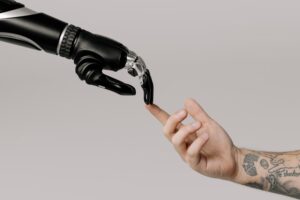machine learning work?
Machine learning is a subset of artificial intelligence that focuses on developing algorithms and models that enable computer systems to learn and improve from data without explicit programming. The basic concept behind machine learning is to train a model on a large dataset, allowing it to recognize patterns, make predictions, or take actions based on the learned knowledge.
Here’s a high-level overview of how machine learning works:
1. Data Collection: The first step in machine learning is gathering and preparing the relevant data. This may involve acquiring data from various sources, cleaning and preprocessing it to remove noise or inconsistencies, and organizing it into a suitable format for analysis.
2. Training Data and Labels: Machine learning algorithms require labeled training data, where each example in the dataset is associated with a corresponding label or outcome. The training data is divided into input features (attributes) and the corresponding labels, which the model aims to predict.
3. Model Selection and Training: Based on the problem at hand, a suitable machine learning algorithm or model is selected. The model’s architecture and parameters are defined, and the training process begins. During training, the model is exposed to the labeled training data, and it learns to identify patterns or relationships between the input features and the corresponding labels.
4. Model Evaluation: Once the model is trained, it needs to be evaluated to assess its performance and generalization capabilities. Evaluation involves using a separate dataset called the validation set or test set, which the model hasn’t seen during training. The model’s predictions are compared against the true labels in the validation set, and various evaluation metrics (such as accuracy, precision, recall, or F1 score) are calculated to measure its performance.
5. Model Optimization: If the model’s performance is not satisfactory, iterative optimization steps may be performed. This includes adjusting the model’s architecture, hyperparameters, or training process to improve its accuracy or generalization ability. This iterative process is often referred to as hyperparameter tuning.
6. Deployment and Inference: Once the model is deemed satisfactory, it can be deployed to make predictions or take actions on new, unseen data. This is called inference. The trained model is used to make predictions or classify new instances by inputting their features into the model, which then produces the desired output.
7. Monitoring and Maintenance: Machine learning models require ongoing monitoring to ensure they continue to perform well and adapt to changing data patterns. If the model’s performance degrades over time, retraining may be necessary using updated data.
It’s important to note that machine learning is a vast field with different algorithms and approaches, including supervised learning, unsupervised learning, reinforcement learning, and more. The specific techniques and workflows may vary depending on the problem domain and the type of machine learning being employed.



